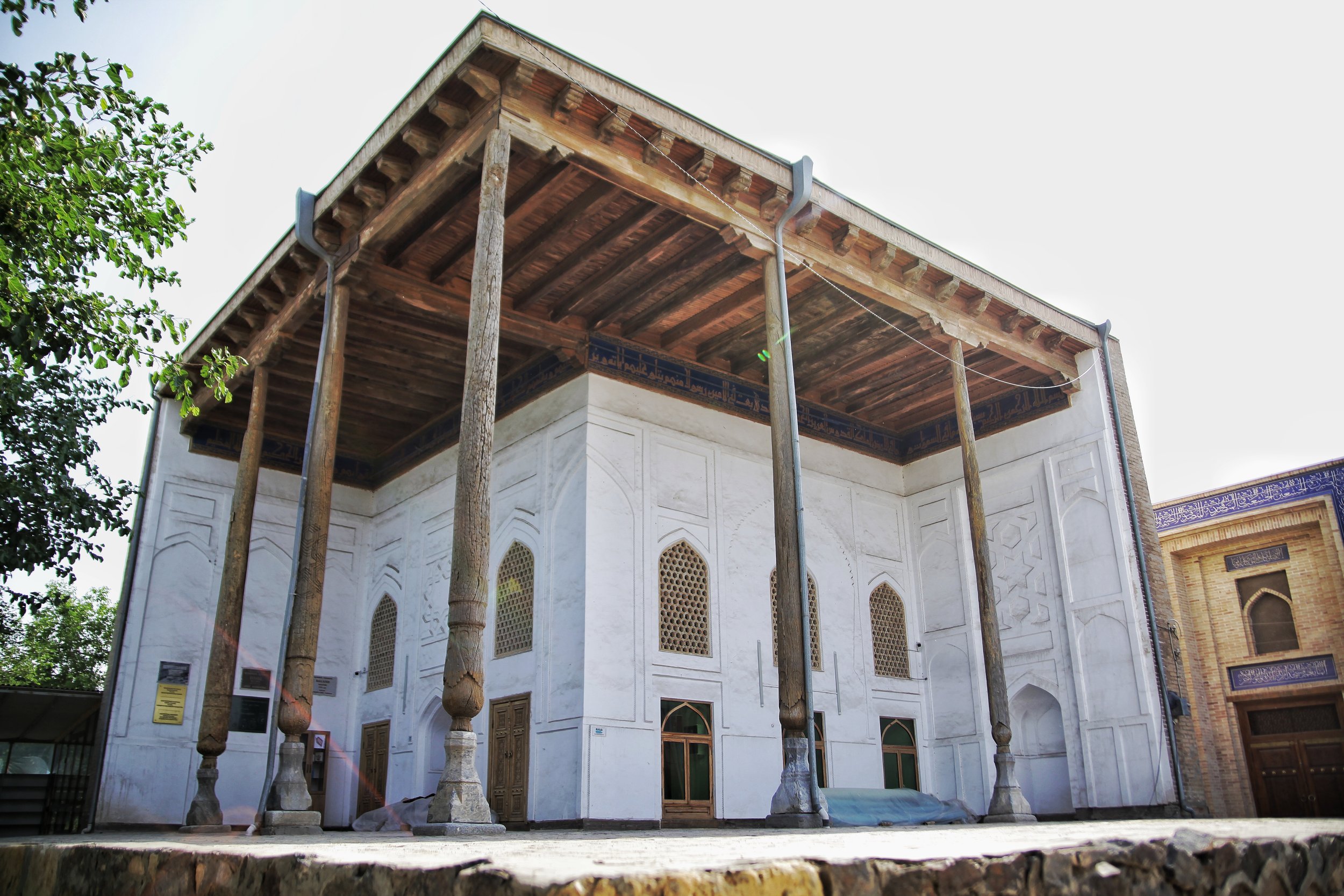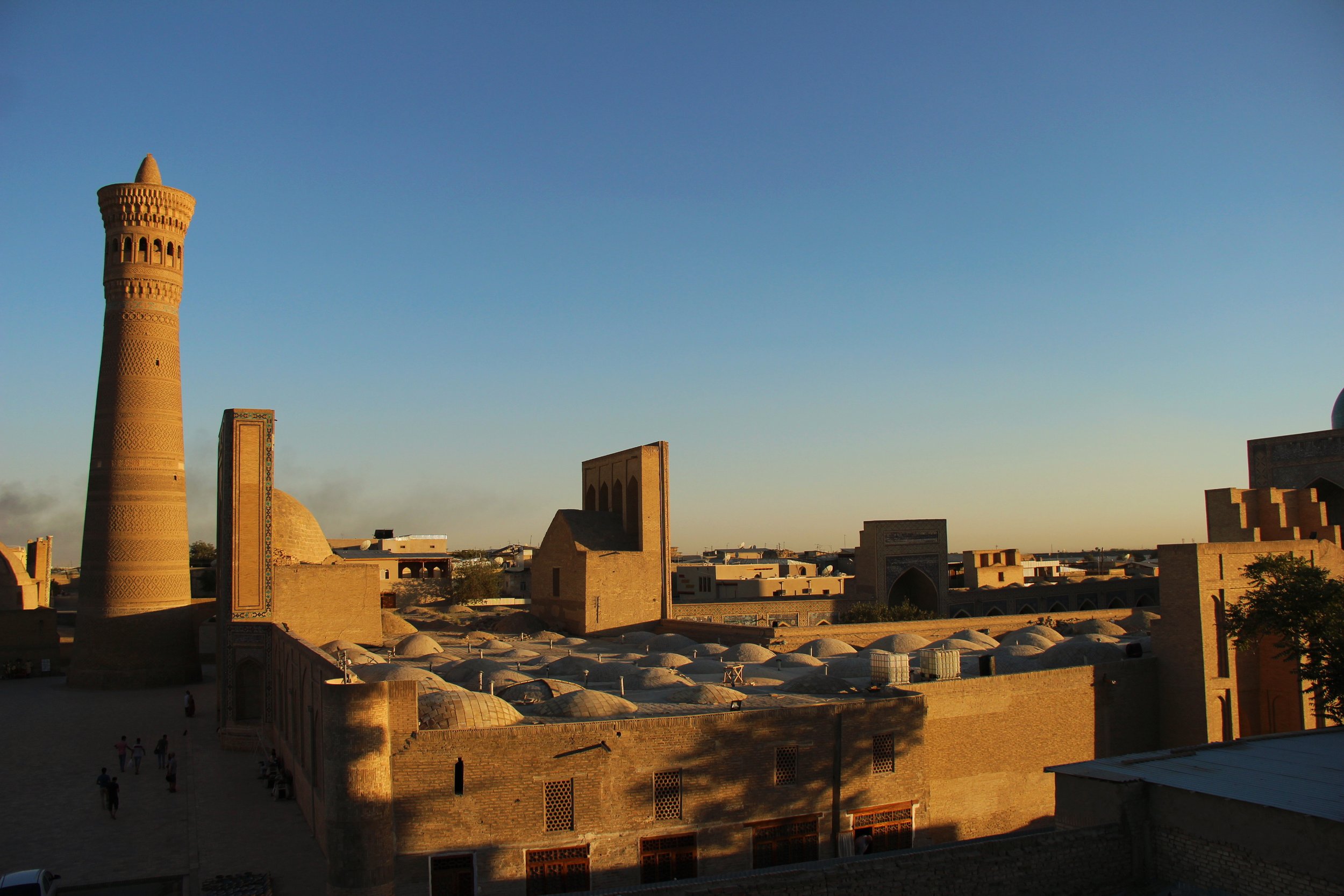Fairy Bukhara
This enchanting destination, boasting over 2500 years of heritage, is a treasure trove of oriental history reflected in its stunning historical monuments. Bukhara is more than just a travel destination – it's a living, breathing testament to centuries of culture and intellect, welcoming you to explore it.
Text by Umida Qodirova
Photos by Kamilla Ismakova
Bukhara's recognition as one of the Eighth Wonders of the Shanghai Cooperation Organisation further enhances its enchanting allure. The architectural marvel of Poyi Kalon, an ensemble that includes the iconic Kalon Minaret, Kalon Mosque, and Mir Arab Madrasa, earned this prestigious title at a ceremony in Beijing on June 21, 2019.
Minarets are timeless symbols of ancient Bukhara, with over 120 of these majestic towers dotting the skyline. These minarets are not just architectural marvels but also serve as vital components of daily life - from calling Muslims to prayer to alerting them about potential threats and even guiding merchants with their towering presence. Among these historic structures, the illustrious Minaret Kalon is a testament to the city's rich history. This towering monument, built in the 12th century, reaches a height of 47.5 m. Intricate decorations and inscriptions adorn it with tales of past rulers like Arslankhon, revered for his urban planning feats. Designated as a UNESCO World Heritage Site in 1993, the Minaret Kalon beckons visitors to witness Bukhara's grandeur from its peak, offering a glimpse into the city's storied past and architectural splendour.
Historian Mukhammad Ali Baljuvoniy reveals a fascinating glimpse into the past, painting a picture of Bukhara's educational landscape in the early 20th century with a remarkable count of nearly 400 madrasas. These centres of Islamic learning, some holding revered university status, were pivotal in shaping the scholarly pursuits of students in Bukhara. Among these institutions stood the iconic Mir Arab and Ulugbek Madrasas, cherished for their rich history and educational contributions. These hallowed halls took six years, resulting in architectural marvels boasting four floors and an impressive 114 khujras (rooms) - mirroring the 114 surahs of the Quran. Over a century later, these madrasas continue to thrive as over 100 students immerse themselves in a four-year journey, delving into Islamic scholarship, spiritual leadership as Imam Hatibs, and the nuances of the Arabic language. The spirit of learning and tradition echo through the walls, preserving the legacy of Bukhara's profound educational heritage. That's why Bukhara welcomed 2020 as the Cultural capital of the Islamic world.
Nestled in the historic heart of Bukhara lies the majestic Kalon Mosque, a testament to the architectural wonders of the late Middle Ages. Translated from Persian as the "big mosque," it is an iconic religious sanctuary, second only in size to the renowned Bibi-Khanym Mosque in Samarkand. The Kalon Mosque beckons visitors with its grandeur, boasting a symmetrical layout with seven outer gates and ornate porches flanking the main eastern entrance. Within the mosque's sacred enclave, two magnificent blue domes grace the skyline, while a captivating gallery of 228 domes envelops the rectangular courtyard in a mesmerizing embrace.
The Ark Qal'a, an ancient fortress, and the solemn Mausoleum of Samanids stand as silent sentinels of a bygone era while the tranquil Chashma-i Ayub beckons with its legendary waters. Exploring Bukhara further reveals the grandeur of Mosque Magoki-Attari, the scholarly haven of Madrasa Mirzo Ulugbek, and the vibrant Lyabi-Hauz ensemble, each weaving a tapestry of culture and heritage that leaves an indelible mark on all who wander through these ancient streets. Eager travellers are sure to uncover a mosaic of historical wonders that promise an unforgettable adventure in this timeless city.
Beyond the mosques and madrasas, the mesmerizing crafts of Bukhara beckon with a timeless allure. Skilled artisans in jewellery making, goldsmithing, carpet weaving, knife crafting, and pottery continue the tradition of creating exquisite pieces that have captivated audiences for centuries. For those who appreciate unique works of art, the International Jewelers and Goldsmiths Festival, held annually in May, offers a captivating glimpse into the world of these talented craftsmen and their timeless creations.
One culinary delight that entices visitors from around the globe in Bukhara is the iconic Bukhara plov, also known as "oshi sofi." This classic dish, a variation of the beloved plov, is meticulously prepared using a unique cooking method that sets it apart from its counterparts in Andijan or Tashkent. What makes Bukhara Plov truly special is its ingredients, which are carefully layered in a copper pot and embody a distinctive blend of flavours and textures. For a memorable dining experience, relish some succulent Gijduvan kebabs under the cool shade of trees at the picturesque Lyabi-Hauz ensemble, adding an extra layer of enjoyment to your gastronomic journey in Bukhara.
Allow this enchanting city to sweep you away with its magic, where every interaction leaves you feeling like family. Come to Bukhara and discover a place where hospitality is a gesture and a way of life.



